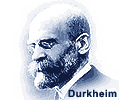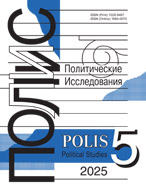Security Dilemma. Risk of Armed Conflict between the Great Powers
Timofeev I.N.,
Cand. Sci. (Pol. Sci.), Associate Professor of the Department of Political Theory, MGIMOUniversity; Program Director, Russian International Affairs Council (RIAC), itimofeev@russiancouncil.ru
elibrary_id: 236879 | ORCID: 0000-0003-1676-2221 |
Timofeev I.N. Security Dilemma. Risk of Armed Conflict between the Great Powers . – Polis. Political Studies. 2009. No. 4
The purpose set by the author of the article is to explain realistically great powers’ armed conflicts, accounting for them by referring to such real factors, as the dynamics of countries’ military expenditures. The author’s main hypothesis implies that armed conflicts are preceded by Intensive or chaotic growth of competing actors’ capabilities, which itself increases uncertainty of the situation and the risk of “the worst scenario”. The above mentioned intensity and chaos are conceptualized in terms of the complexity theory and are measured by the basic Verhulst process model.
See also:
Busygina I.M., Filippov M.G.,
Political modernization of Russia as condition of growth of her international influence. – Polis. Political Studies. 2010. No5
Chugrov S.V.,
Moscow University Bulletin. Series 25. International relations and world politics: 5 years on track. – Polis. Political Studies. 2014. No5
Lebedeva M.M., Zinovieva E.S.,
Methods of neuroscience in studying world politics. – Polis. Political Studies. 2023. No5
Manoylo A.V.,
Modern Political Conflicts: The Right for Interference. – Polis. Political Studies. 2017. No6
Efremenko D.V.,
Skeletons in a Slavic Closet. Controversies of Historical Memory and Nation-Building in Serbia and Croatia after the Collapse of the SFRY. – Polis. Political Studies. 2021. No5





.jpg)






 print
print
.jpg)
.jpg)